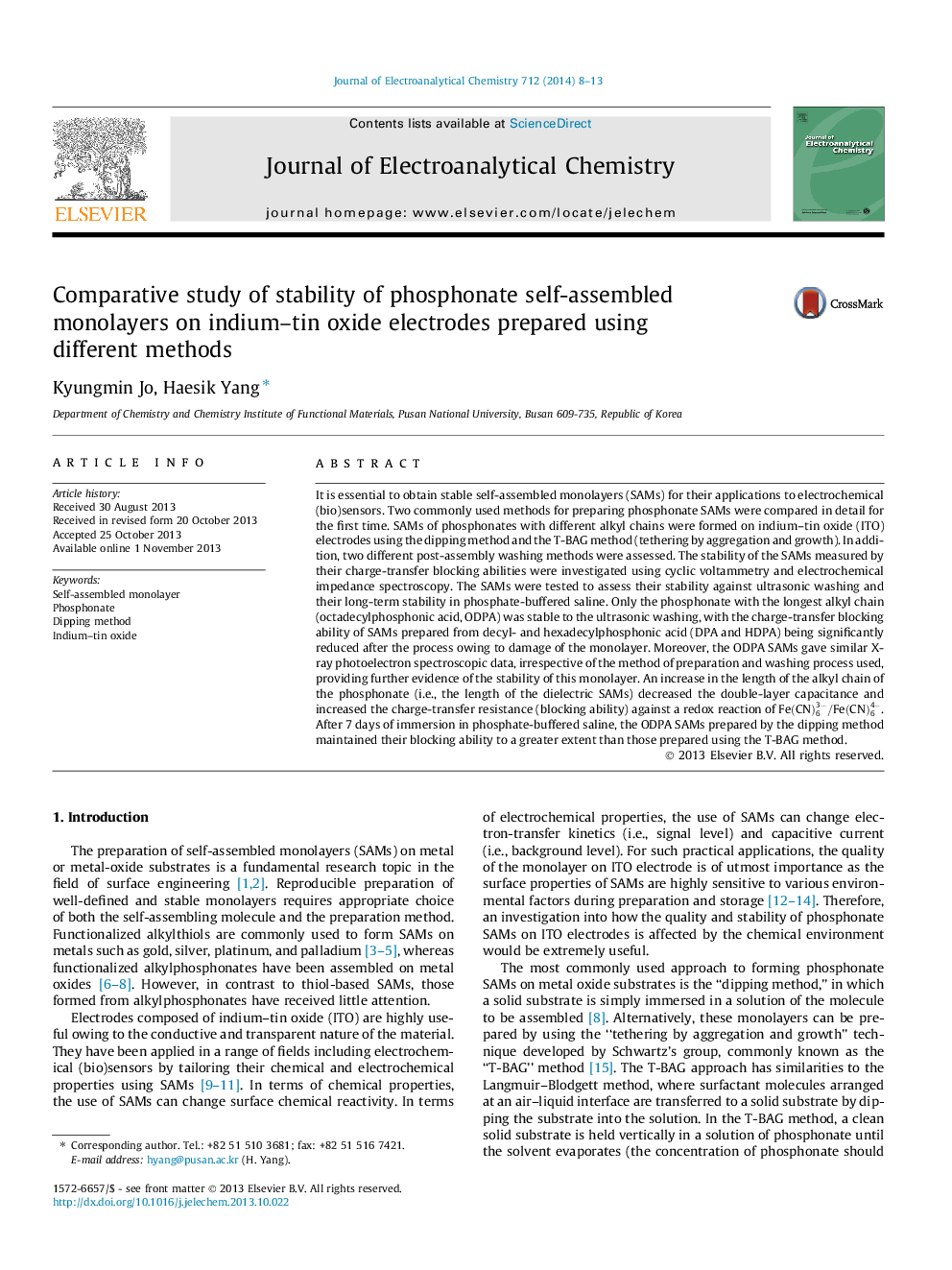| کد مقاله | کد نشریه | سال انتشار | مقاله انگلیسی | نسخه تمام متن |
|---|---|---|---|---|
| 6662734 | 463226 | 2014 | 6 صفحه PDF | دانلود رایگان |
عنوان انگلیسی مقاله ISI
Comparative study of stability of phosphonate self-assembled monolayers on indium-tin oxide electrodes prepared using different methods
دانلود مقاله + سفارش ترجمه
دانلود مقاله ISI انگلیسی
رایگان برای ایرانیان
کلمات کلیدی
موضوعات مرتبط
مهندسی و علوم پایه
مهندسی شیمی
مهندسی شیمی (عمومی)
پیش نمایش صفحه اول مقاله

چکیده انگلیسی
It is essential to obtain stable self-assembled monolayers (SAMs) for their applications to electrochemical (bio)sensors. Two commonly used methods for preparing phosphonate SAMs were compared in detail for the first time. SAMs of phosphonates with different alkyl chains were formed on indium-tin oxide (ITO) electrodes using the dipping method and the T-BAG method (tethering by aggregation and growth). In addition, two different post-assembly washing methods were assessed. The stability of the SAMs measured by their charge-transfer blocking abilities were investigated using cyclic voltammetry and electrochemical impedance spectroscopy. The SAMs were tested to assess their stability against ultrasonic washing and their long-term stability in phosphate-buffered saline. Only the phosphonate with the longest alkyl chain (octadecylphosphonic acid, ODPA) was stable to the ultrasonic washing, with the charge-transfer blocking ability of SAMs prepared from decyl- and hexadecylphosphonic acid (DPA and HDPA) being significantly reduced after the process owing to damage of the monolayer. Moreover, the ODPA SAMs gave similar X-ray photoelectron spectroscopic data, irrespective of the method of preparation and washing process used, providing further evidence of the stability of this monolayer. An increase in the length of the alkyl chain of the phosphonate (i.e., the length of the dielectric SAMs) decreased the double-layer capacitance and increased the charge-transfer resistance (blocking ability) against a redox reaction of Fe(CN)63-/Fe(CN)64-. After 7Â days of immersion in phosphate-buffered saline, the ODPA SAMs prepared by the dipping method maintained their blocking ability to a greater extent than those prepared using the T-BAG method.
ناشر
Database: Elsevier - ScienceDirect (ساینس دایرکت)
Journal: Journal of Electroanalytical Chemistry - Volume 712, 1 January 2014, Pages 8-13
Journal: Journal of Electroanalytical Chemistry - Volume 712, 1 January 2014, Pages 8-13
نویسندگان
Kyungmin Jo, Haesik Yang,